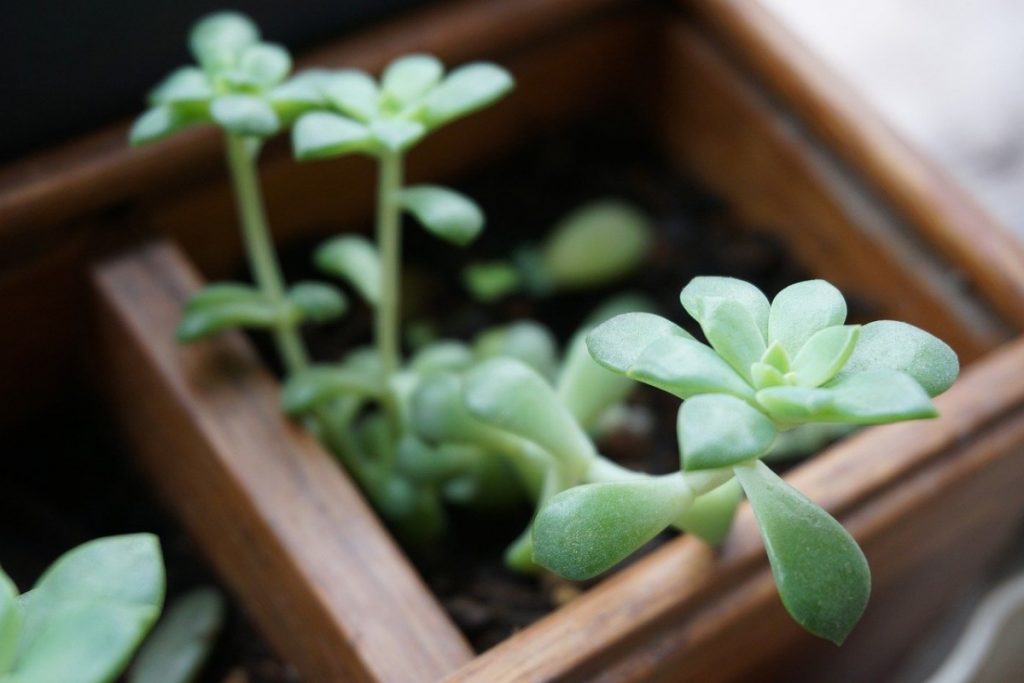If you are planning to propagate a succulent from a cutting, you may wonder how to do it correctly, and where to place the fresh cutting. In this post, I will share with you the steps when it comes to propagating succulents from cuttings–and the mistakes you should avoid.
To start with, unlike other plants, succulents are super easy to propagate. It is one of the reasons why they are relatively inexpensive in florist shops, simply because companies can easily propagate them in bulk, which means their margins are better, and they can sell them cheaper. In my experience, you can start with a few “mother plants” and grow a whole succulent garden a few months later.
But there are a few things you need to remember when propagating succulent plants. One of them is that you need to let the cuttings get calloused first, before you can finally plant them into the soil. Don’t worry though, the entire process is quite simple, and I will show you how to do it right now, in a few simple steps.

Step no. 1: Remove the leaves from the stem
The first step is to choose the right stem to propagate. Then remove all the leaves below the rosette. But make sure though that the base of the leaf is intact and healthy. It is like with everything else in life–if you do the first step right, everything else will be easier. On the contrary, if you start with a stem that already has some problems, your propagation will be an uphill battle.
Step no. 2: Allow the end of the cutting to callous
The next thing you need to do is to put the fresh cutting on the empty tray. Let it stay there for a couple of days and wait until the end of the cutting is calloused. This is a very important step. Do not put the cuttings directly into the soil. Because they need to callous first, and that just won’t happen once they are already in the soil.
Step no. 3: Prepare a pot with a fast-draining soil
As you know, succulents do not grow well in compact or regular garden soil. It absorbs or retains too much water, and succulents prefer drier environment and soil with aeration, just like the one they have in their native lands–the semi-desert areas.
To successfully propagate a new succulent plant from cutting, you need to use a fast-draining soil (click here to check my recommended soil on Amazon). Fill a tray with a well-draining soil and place the calloused cuttings on top of it. Then, let the roots and sprouts grow around the base of the cuttings. Be patient because this process will normally take a few weeks.
Minimal and less frequent watering is enough for the developing plant. If you are not sure whether to water or not, just do not water.
Step no. 4: Remove the “parent leaf”
Once you notice the parent leaf starts to wither, you can remove it. But make sure that you don’t disturb the newly developed roots and leaves. As the baby plants have become big enough, you can replant them in your desired pot or planter.
Succulents are sun-loving plants. But when they are young, avoid exposing them to direct sunlight. Just like you need to be careful with a small child–what won’t harm an adult can seriously harm the child, you need to be careful with your baby succulents.
Propagating from offsets
You can also propagate succulents using their offsets. Some succulent varieties develop offsets, for example aloe vera and hens and chicks, to pick the two most popular.
Offsets are small plants that grow around the main plant. What you can do is to wait for the offsets to develop roots. As soon as you see some roots, you can take the offsets and allow it to callous. The process in propagating offsets is pretty much the same as propagating cuttings. The good thing about replanting the offsets is not only you can grow more plants in no time but it also helps the main plant to grow healthily–so offsets do not take the nutrients the main plant should get.
Is it better to propagate your succulents in water, or in soil?
Both propagation techniques work, as long as you take the steps I just described. However, in my opinion, propagating in the soil is more straight-forward, and hence easier for beginners.
With soil, once the cutting or leaf is calloused, you can directly plant it in fast-draining soil. From that point on there is nothing you need to do. The newly developed succulent plant will just grow and thrive on its own.
On the other hand, propagating in water involves more work. This is because the roots developed in water cannot be planted directly into the soil. The roots are simply incapable of growing in the new medium. What you need to do is to add a little amount of soil into the water, so the roots can slowly acclimatize to new growing medium. Then just after few weeks you can finally place them in a pot with fast-draining soil…
Final thoughts
The normal propagation process of succulents involves allowing the cutting to callous before it can be planted into the soil. Once the raw end of the cutting is calloused, you can place it on top of the shallow fast-draining soil.
Remember it takes a few weeks for the roots and leaves to grow. As the roots and the new plants get established, you can replant them. Remember the be patient. Rome was not build in a day, a child doesn’t learn to speak in a month, and a baby succulent takes time to grow… Rushing things won’t take you anywhere really. Hope this helps, and good luck with your propagation!
May also interest you:
